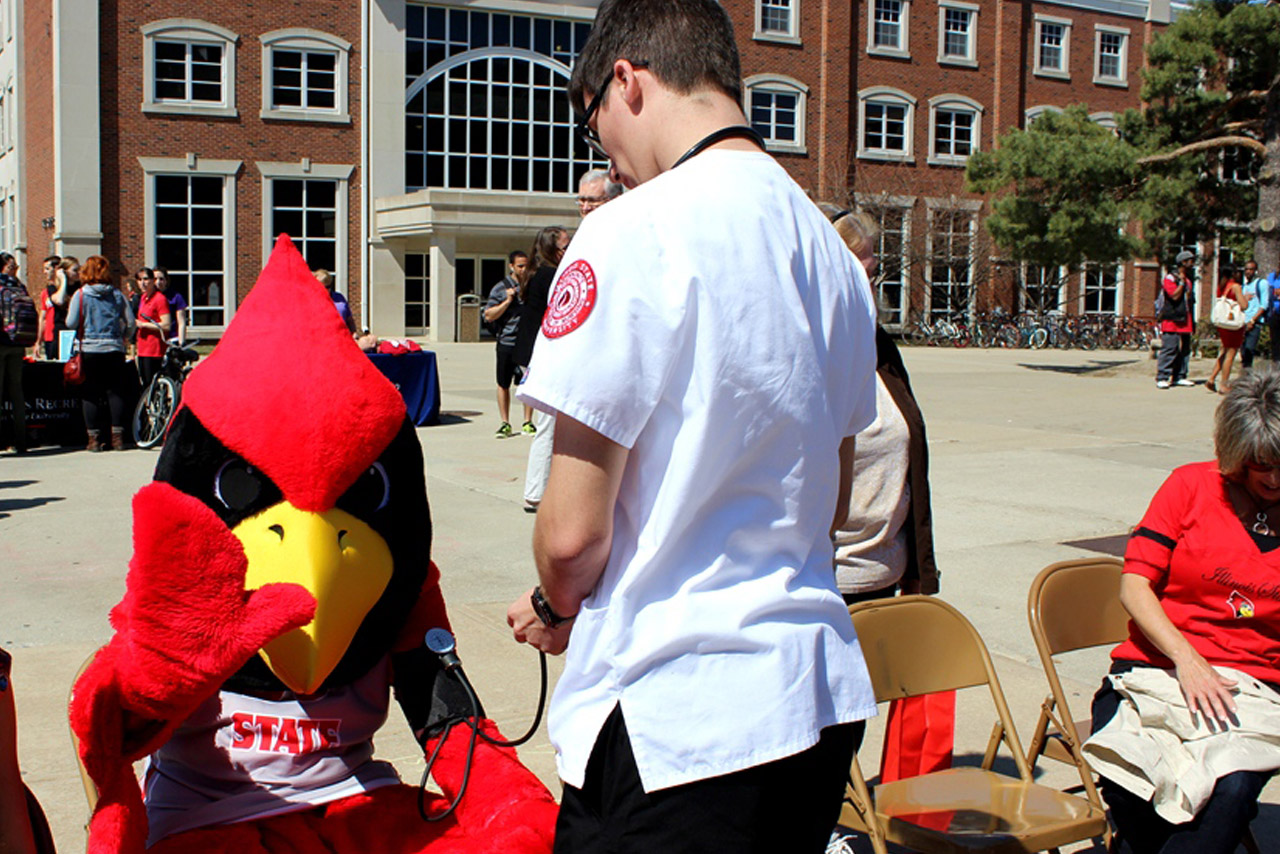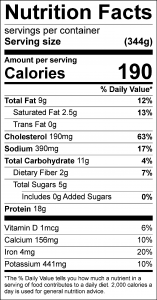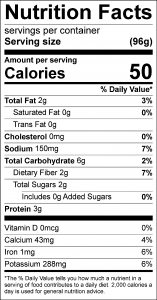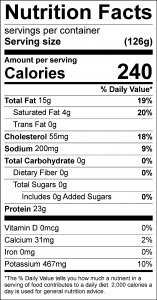Fundamentally speaking, your heart is a muscle. Its main function is to pump blood to your body, which ultimately keeps you alive. The heart pumps the blood through an electrical system that contracts the heart’s walls. When the walls contract, blood is pumped out into the rest of the body.
Just like any muscle, the heart can be strong, weak, or overworked under certain circumstances. If a disease or injury weakens or overworks your heart, you will not move blood throughout the body very efficiently.
DASHing Away High Blood Pressure
High blood pressure is when the force of your blood flowing through your veins is constantly too high. The constant pressure overworks and weakens your heart, increasing your risk for heart disease, stroke, coronary heart disease, and heart attack. High blood pressure can be hereditary in families and can be more common among certain ethnicities and nationalities.
Another cause of high blood pressure is a diet with lots of saturated and trans fats, sodium, red meat, and sugar or sugar-sweetened beverages. Sodium in particular has been identified as one of the most significant minerals in managing high blood pressure. While the body only needs about 500 mg of sodium per day, the average person consumes more than 3,400 mg/day. A therapeutic diet known as the DASH diet was created to help manage or prevent high blood pressure.
The DASH diet encourages:
- Eating fruits, vegetables, and whole-grains daily
- Including fat-free or low-fat dairy products, fish, poultry, beans, nuts, and vegetable oils
- Limiting foods that are high in saturated fat, such as fatty meat, full-fat dairy, and tropical oils such as coconut, palm kernel, and palm oils
- Limiting sugar-sweetened beverages or sweets
- Consuming no more than 2,300 mg of sodium per day. Fun fact: the majority of Americans’ daily sodium intake comes from grains and meat.
Tips for shopping with DASH guidelines:
- Choose fresh fruits and vegetables
- Compare amounts of sodium in full-fat vs. low-fat dairy options
- When shopping for frozen and canned vegetables, choose no salt added or low-sodium options
- When buying processed foods, read nutrition labels and choose products with less sodium
- Note how much sodium is in each serving and how many servings are in each package
- Foods that contain 35 mg or less per serving are very low in sodium options. Foods that contain 140 mg or less per serving are defined as low sodium
Questions about nutrition?
Health Promotion and Wellness offer free, individual diet analysis and nutrition guidance for those striving to improve their lifestyle. Faculty, staff, and students can meet one-on-one with the Health Promotion and Wellness nutritionist in a confidential setting at no cost.
Participants need to complete a three-day food diary and a health questionnaire available online prior to their nutrition consult. Forms may be returned via email, by campus mail to 2120, by fax to (309) 438-5003, or by hand delivery to the main Health Promotion and Wellness office in 187 McCormick Hall.
Health Promotion and Wellness also provide presentations for campus groups and organizations. Please call our office at (309) 438-WELL (9355) to request this service.
Examples of DASH Recipes
Breakfast egg scramble
Ingredients:
- 4 eggs
- 1 cup of spinach, swiss chard, or kale
- 1 cup of sliced mushrooms
- ½ cup of 2 percent milk
- ½ cup of vegetable or chicken broth
- 1 teaspoon olive oil
Directions:
- Place a frying pan over medium heat
- Add broth to the pan and wait for bubbles to begin forming before adding mushrooms and greens
- Cook mushrooms and greens with stirring for 3–4 minutes until soft
- In a bowl, mix together eggs and milk
- Once vegetables are cooked, pour in olive oil and coat the inside of the pan
- Add egg/milk mixture to the pan and use a utensil to scramble the eggs until just barely cooked (still moist)
- Enjoy!
Broccoli with garlic and lemon
Serves four
Ingredients:
- 4 cups of broccoli florets
- 1 tsp. olive oil
- 1 T minced garlic
- 1 tsp. of lemon zest
- ¼ tsp. of kosher salt
- ¼ tsp. black pepper
Directions:
- In a small saucepan, bring 1 cup of water to a boil.
- Add the broccoli to the boiling water and cook for 2–3 minutes or until tender. Drain broccoli.
- In a small sauté pan over medium-high, heat the oil. Add the garlic and sauté for 30 seconds. Add broccoli, lemon zest, salt, and pepper. Combine well and serve.
Roasted Asian salmon
Serves four
Ingredients
- 1 tablespoon sesame, avocado, or olive oil
- 1 tablespoon of fresh parsley, dill, or thyme
- 1 tablespoon reduced-sodium soy sauce
- 1 tablespoon fresh ginger, minced
- 1 tablespoon rice wine vinegar
- 4 salmon fillets, each 4 ounces
Directions
- Preheat Oven to 350° F
- In a shallow glass dish, combine sesame oil, soy sauce, ginger and vinegar.
- Add the salmon and turn to coat all sides. Refrigerate for 30–60 minutes, turning occasionally.
- Once preheated, place salmon in the oven and cook for 15–20 minutes
- Serve warm!
Sources
American Heart Association (2016). Managing blood pressure with a heart-healthy diet. Retrieved from: https://www.heart.org/en/health-topics/high-blood-pressure/changes-you-can-make-to-manage-high-blood-pressure/managing-blood-pressure-with-a-heart-healthy-diet
American Heart Association (2017). Changes you can make to manage high blood pressure. Retrieved from: https://www.heart.org/en/health-topics/high-blood-pressure/changes-you-can-make-to-manage-high-blood-pressure
National Heart, Lung, and Blood Institute (Unknown). DASH eating plan. Retrieved from: https://www.nhlbi.nih.gov/health-topics/dash-eating-plan
National Heart, Lung, and Blood Institute (Unknown). How the heart works. Retrieved from: https://www.nhlbi.nih.gov/health-topics/how-heart-works
United States Department of Health and Human Services (2003). Your guide to lowering blood pressure. Retrieved from: https://www.nhlbi.nih.gov/files/docs/public/heart/hbp_low.pdf





DASH is really effective approach.